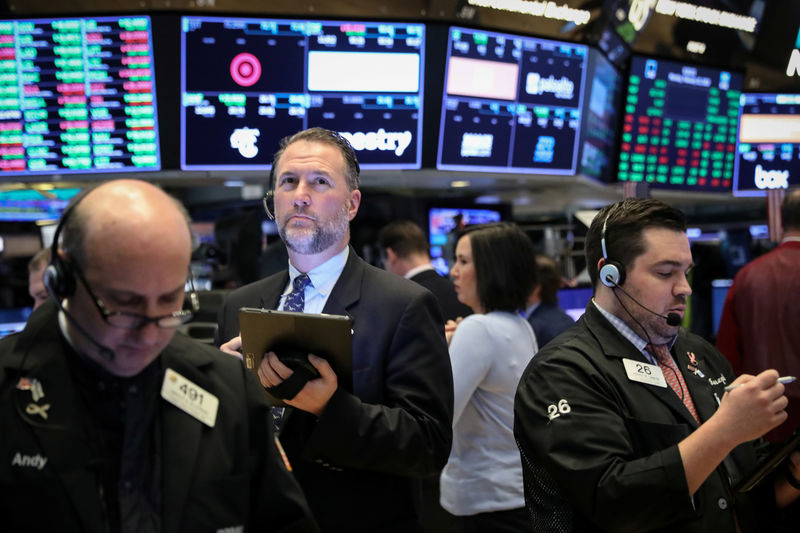 © Reuters.
© Reuters.
By Yasin Ebrahim
Investing.com -- The S&P 500 fell Friday, as a strong monthly jobs report was offset by an escalating Ukraine-Russia conflict that is poised to push inflation much higher.
The S&P 500 fell 1.2%, the Dow Jones Industrial Average fell 1%, or 328 points, the Nasdaq Composite fell 2.0%.
Expectations for a ceasefire dwindled after Russia escalated its attack on key Ukrainian cities on Friday, forcing investors to pull out of risk assets including stocks and into safe-haven bonds and gold.
The rising geopolitical tensions offset data showing the U.S. created more jobs than expected in February, and the unemployment rate slipped to the lowest since February 2020.
Nonfarm payrolls increased 678,000 in February, well above consensus expectations for 400,000 new jobs, while the unemployment rate fell by more than expected to 3.8%.
Wage growth, however, was flat, missing expectations for a 0.5% monthly rise despite numerous reports of companies having to hike wages to attract workers.
"The flat average hourly earnings number was a relief to see given the increasing inflationary worries,” Eric Diton, president and CEO of The Wealth Alliance, told Investing.com in an interview on Friday.
But the Russia-Ukraine conflict is likely to disrupt supplies of key commodities including wheat, corn, oil and gas, speeding up the pace of inflation.
“In terms of total natural resources, Ukraine is fourth in the world by total value, and first in Europe in terms of farmable land area," Diton added. "The Ukraine-Russia conflict is a big inflationary tailwind."
Energy stocks continued to ride the rise in oil prices higher as reports that the White House is considering a ban on Russia oil imports to the U.S. added to concerns of tighter global energy supplies.
Technology and financial stocks were the biggest sectors keeping the market in the red, with the latter under pressure from falling bank stocks as Treasury yields dropped in the wake of concerns about global growth, and falling bets on aggressive Fed rate hikes.
Regional banks including SVB Financial (NASDAQ:SIVB), Invesco (NYSE:IVZ), Signature Bank (NASDAQ:SBNY), were down sharply, with latter falling by more than 8% despite Goldman Sachs reiterating is buy rating on the stock.
Tech stocks were dragged lower as megacap tech slipped, while semiconductor stocks were 3% lower as losses in NVIDIA (NASDAQ:NVDA) and Advanced Micro Devices (NASDAQ:AMD) offset gains in Broadcom.
Broadcom (NASDAQ:AVGO) reported fiscal first-quarter results that topped Wall Street expectations on both the top and bottom lines, sending its shares more than 2% higher.
The chipmaker also guided fiscal second-quarter growth well above expectations on “broad-based demand, lean channel inventory and growing backlog despite stable albeit extended lead times (~50 weeks,” Credit Suisse said in a note as it reiterated its $700 price target on the stock.
Kroger (NYSE:KR), meanwhile, was up more than 6% after the grocery chain detailed long-term growth plans that included a commitment to return about 8% to 11% to shareholders amid a boost from initiatives to bolster its digital growth.
Gap (NYSE:GPS) reported a narrower-than-expected fourth-quarter loss and upbeat guidance, but concerns about supply chain disruptions and rising labor costs weighed on sentiment, forcing the stock to cut its intraday gains.

